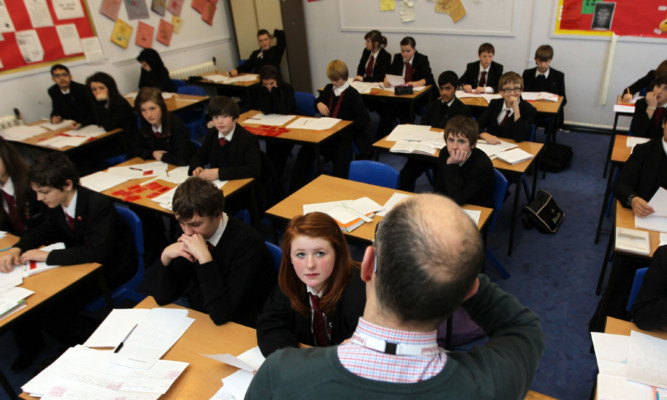The scale of the Scottish Government’s failure to reduce class sizes is laid bare by figures revealing Tayside and Fife’s bloated classrooms.
The SNP came to power on the back of a pledge that P1-P3 classes would contain 18 pupils or fewer. But figures obtained by The Courier show that, eight years on, more than a quarter (26%) of the region’s 844 classes for those age groups have 26 or more pupils.
Small class sizes have been found in academic studies to be a key factor in raising educational attainment, particularly for the youngest schoolchildren and those from poorer backgrounds.
The breakdown of individual class sizes from Angus, Dundee, Fife and Perth and Kinross councils shows that just one in five classes would this year have met the government’s original target, which was downgraded in 2011.
Thirteen classes in Dundee have 30 pupils (7%), compared with four in Angus (3%) and three in Perth and Kinross (3%). Angus has a P1 class with 33 pupils, but the council there says it is manned by two experienced teachers.Click image for full view of school-by-school figures:
Fife has 29 classes with 30 pupils (7%) one of which has two teachers as well as two classes with 31 pupils.
Fife teacher John Melville, from the NASUWT union, said he is worried about the “negative impact on both teacher workload and pupil learning and attainment” from increasing class sizes.
Scottish Government data released separately on Wednesday shows Dundee has the lowest proportion of pupils in the first three years of school in classes of 18 or under for the second year in a row. Dundee has faced an acute teacher shortage in recent years.
Stewart Hunter, the education convener at Dundee City Council, said it is meeting the new P1 target for 25-and-under class sizes.
“It’s our desire to get back to 18 and under when the financial situation gets better but at the moment it is just not possible,” he said.
Kevin Funnell, education team manager at Fife Council, said it is successfully reducing class sizes to 18 or under in areas of deprivation. He said the quality of learning and teaching has a “far more significant effect” on educational outcomes than class size reduction by itself.
An Angus Council spokeswoman said it has the sixth-highest percentage of P1-P3 classes with 18 pupils or fewer in the country, at 22.4%.
Perth and Kinross Council said all its P1-P3 classes “fully comply” with the government’s requirements.
Labour MSP Iain Gray said his time as a teacher taught him class sizes have an impact on learning and added: “Our children need more than warm words and empty election promises. They need more teachers in their schools.”
